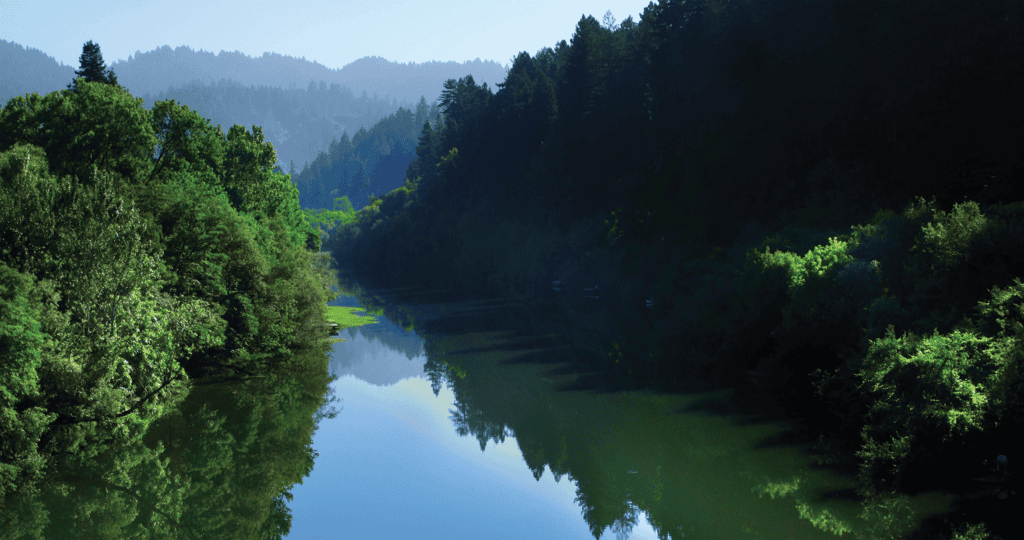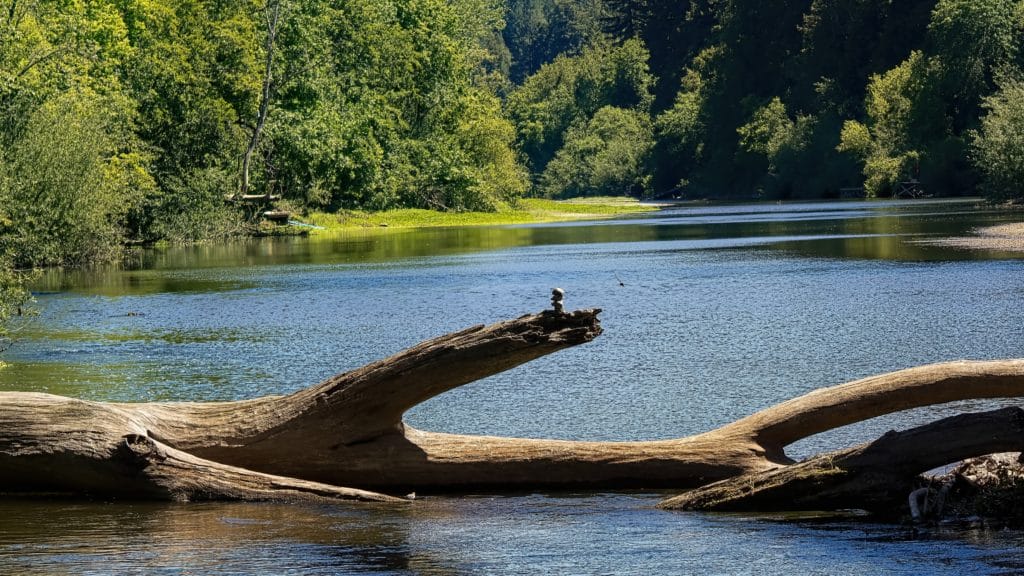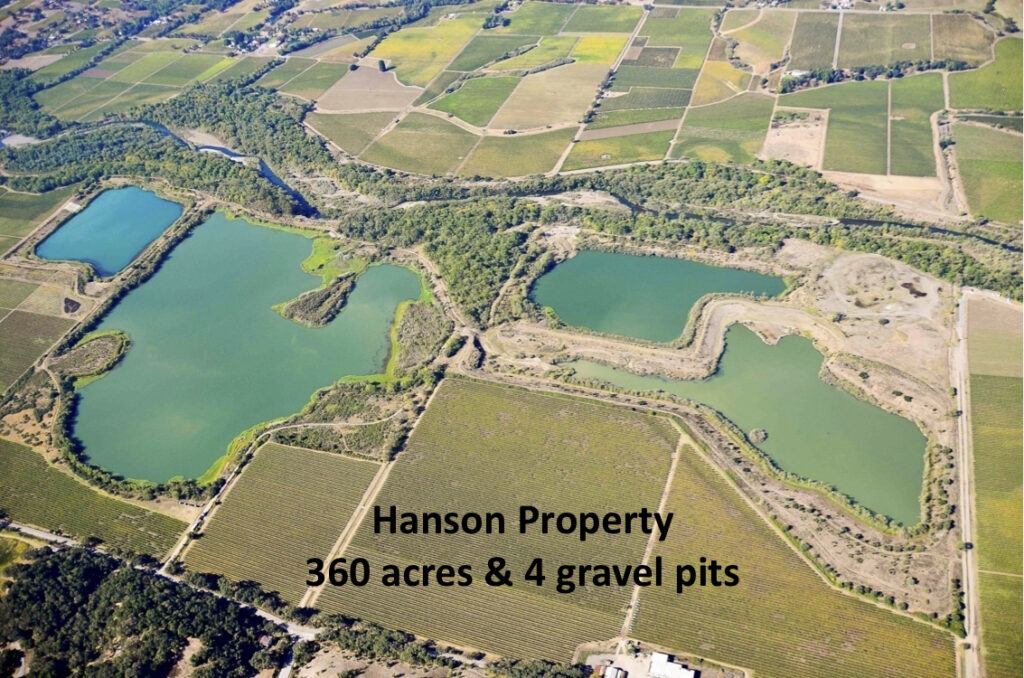Sediment impairment is a major environmental issue affecting waterways worldwide, and the Russian River is included. As we discussed in our December Newsletter excessive sedimentation can lead to diminished water quality, disruption of aquatic habitats, and alteration of river flows. While sources of sediment in the Russian River watershed are diverse, the main contributors are currently unregulated agricultural activities, urban development, and natural erosion processes. In this article, we look at how we can begin addressing some of these sources of sediment impairment stemming from unregulated agricultural activities improving water quality throughout the Russian River watershed.
The Importance of a Healthy Riparian Zone
The riparian zone is the interface between land and a river or stream, naturally acting as a final line of defense against pollutant-filled runoff. This is because they act as natural buffers, filtering sediments and pollutants from surface runoff before they enter water bodies. Healthy riparian vegetation also helps with soil stabilization and helps reduce erosion, another contributor to sediment impairment. Unfortunately, many riparian zones are no longer sufficient to provide these benefits as they have been subsumed into local agricultural practices or have been hardened through human activity.
For example, our watershed’s primary agricultural producer, vineyards, have largely grown their productions into these riparian zones and corridors to expand their property’s output. This loss of natural ecological function combined with certain vineyard practices, has resulted in oftentimes significant sediment-filled runoff from vineyard properties. As the primary agriculture practice within our watershed and one of the last without any discharge regulation, these discharges add up exponentially and are now a main contributor to sediment impairment.
Vineyard practices such as tilling, planting, and harvesting can all disturb the soil; or even vine placement (e.g., on a slope or in loose soil) and row direction can impact the amount of sediment that runs off a property. Activities that disturb the soil, cause compaction, or result in bare dirt all increase the risk of erosion and sediment runoff into nearby water bodies. However, with the adoption of sustainable viticulture practices that are geared towards protecting water quality, vineyards can become a part of the solution to this environmental challenge while benefitting simultaneously.
Sustainable Practices Benefitting Water Quality
One of the best ways to address sediment-laden discharges coming off vineyard properties is to return the Riparian Zone (aka: Riparian Corridor) to its natural state via habitat restoration efforts. This method in particular is considered to be highly effective because it not only helps provide erosion control and improves sediment capture, it also provides essential habitat for various species and helps with flood management. The Riparian Zone helps with erosion control by restoring native vegetation along the riverbanks which helps anchor the soil, reducing erosion and subsequent sedimentation in the river. Healthy riparian buffers also filter pollutants and sediments from runoff, improving the overall water quality in the river, which is crucial for both wildlife and human use. By focusing on erosion control, water quality improvement, habitat restoration, and flood management these projects not only help address the immediate issue of sedimentation but also contribute to the overall ecological and social health of our watersheds.
Other sustainable practices that benefit water quality include things like the use of cover crops, reduced tillage and no-tillage, contour planting and terracing, sediment basins, and other erosion control structures. These practices are helpful because they help provide additional soil stabilization by minimizing soil disturbance, reducing runoff velocity, increasing sediment filtration, maintaining healthy soil structures, and trapping sediment on site. Depending on an individual property’s needs, a varying mix of these and other practices can be used to make a positive impact on water quality by reducing sediment discharges.
The use of these sustainable practices will often provide benefits beyond just sediment control by helping overall soil health and increasing rich organic matter. This, in turn, contributes to healthier vines and potentially better-quality grapes, meaning higher-value crops. Increased organic matter is also known to increase soil moisture retention, which reduces the need for irrigation while also sequestering more carbon, contributing to climate change mitigation. These are all benefits to a vineyard operating, while also improving the overall health of our ecosystem.
Vineyards Making a Difference
Several vineyards in the Russian River watershed have implemented many of these and other sustainable practices with notable success. Dark Horse and Beckstoffer Vineyards have both employed a range of these sustainable practices, including eliminating or significantly reducing their tillage, restoring their riparian habitats, and using cover crops. These have all resulted in a measurable decrease in sediment runoff while enhancing local biodiversity, controlling sediment, and helping improve water quality.
Collaborative Efforts and Policy Support
To encourage more widespread adoption of sustainable vineyard practices, collaborative efforts between vineyard owners, environmental groups, and government agencies are essential. Policy support, in the form of incentives, regulatory frameworks, and necessary oversight measures is crucial in promoting sustainable viticulture. Regular monitoring and benchmarks are necessary to encourage continued growth toward obtaining our water quality goals. Local communities must help engage and support these efforts to ensure long-term success and foster a culture of environmental stewardship.
Through the adoption of various sustainable viticulture practices, vineyard owners can not only enhance the health of their vines but also play a crucial role in preserving the health of our watershed. The shift towards more environmentally friendly farming practices represents a win-win scenario for both the wine industry and our watershed. Continued education, policy support, and collaborative efforts will be key to realizing this potential, ensuring a sustainable future for both the vineyard industry and our environment.






